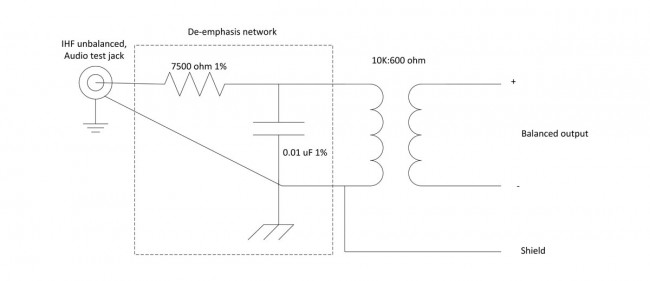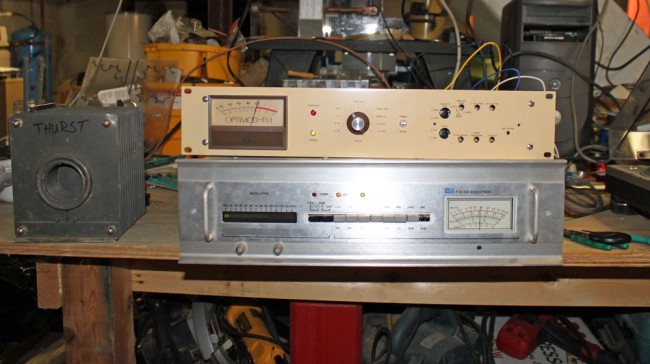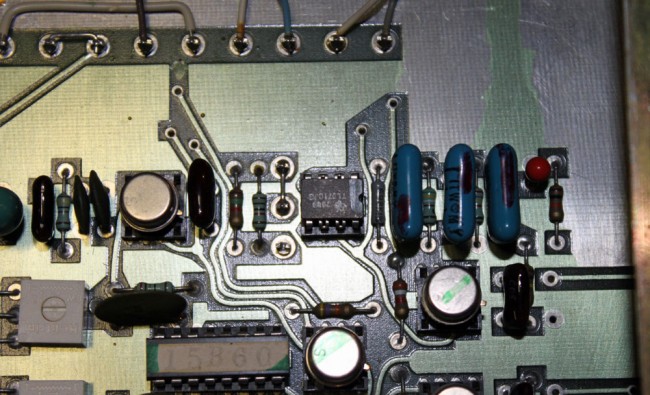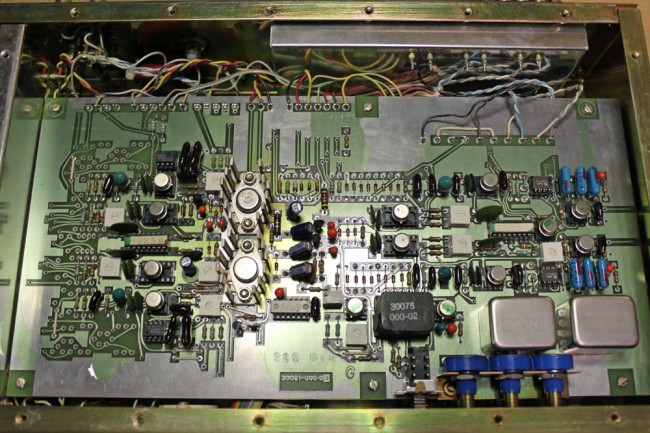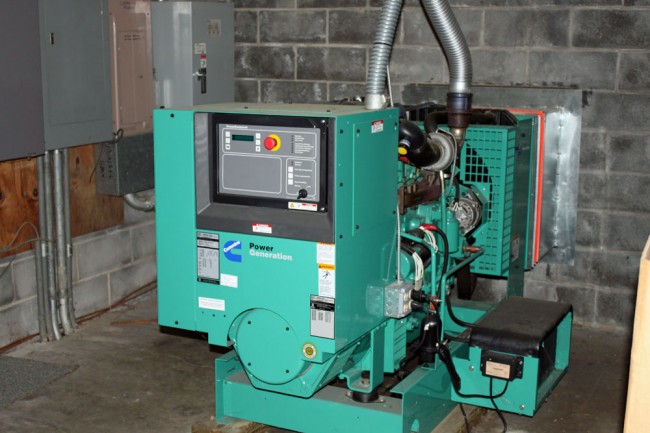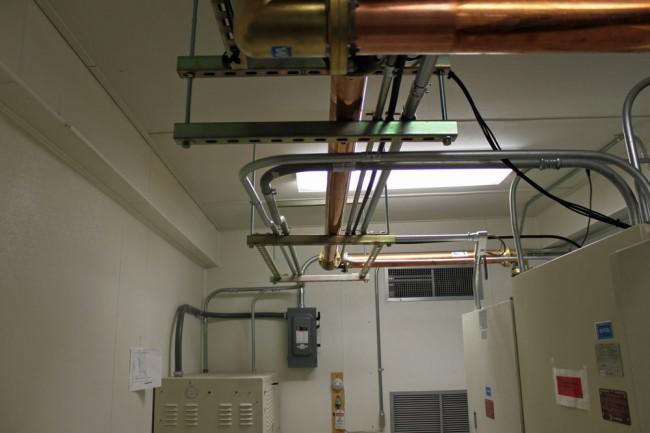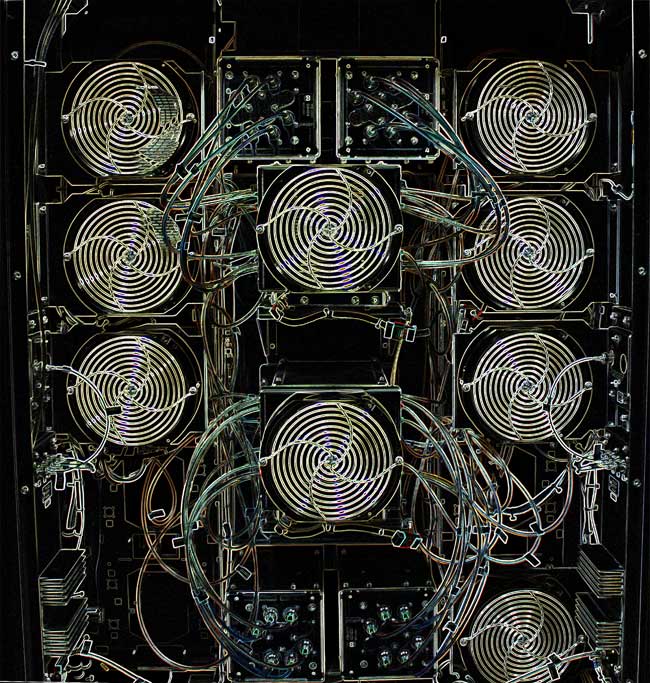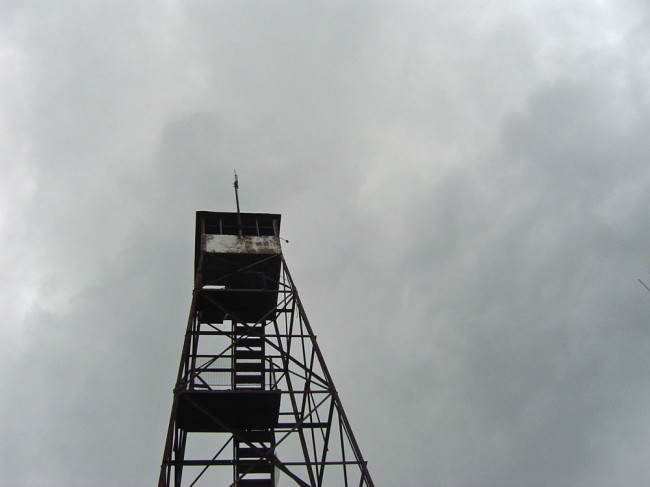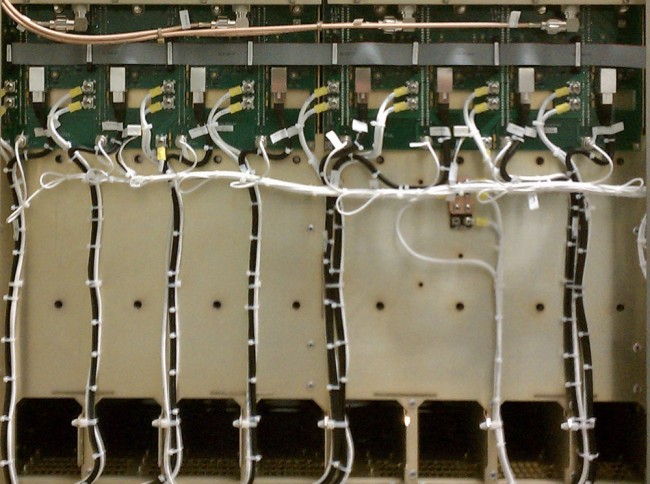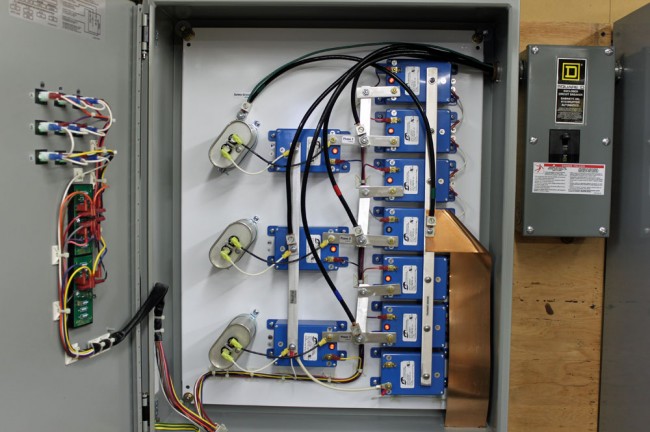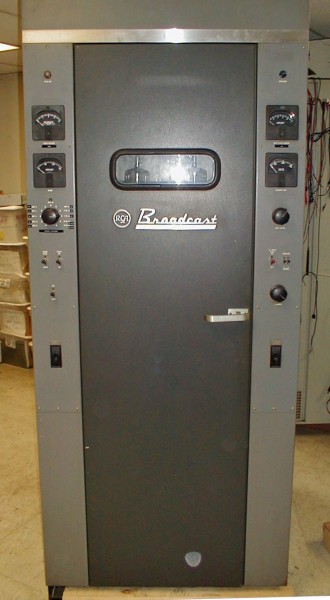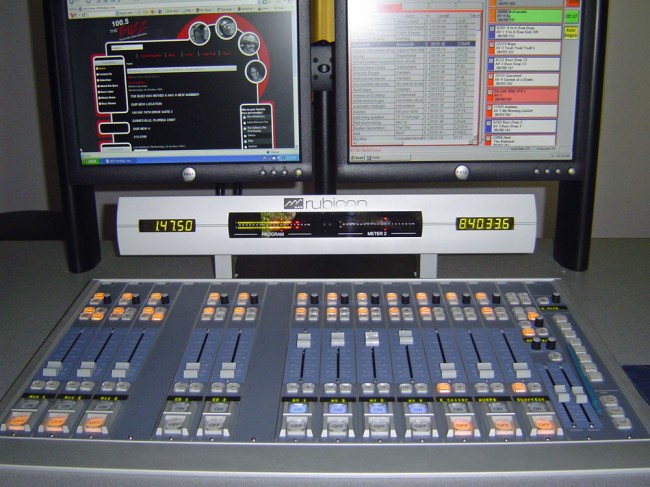Last year, the main antenna and transmission line for WSPK was replaced. I was, therefore, somewhat surprised to hear that there was an issue with the new transmission line. And yet, problems there are. Most likely, some ne’er do well has shot the transmission line with a bullet making a hole, which, when it rains, allows in water. Said water then accumulates in the bend at the bottom of the tower. When enough water is present to fill the gap between the center conductor and the outer conductor, this happens:
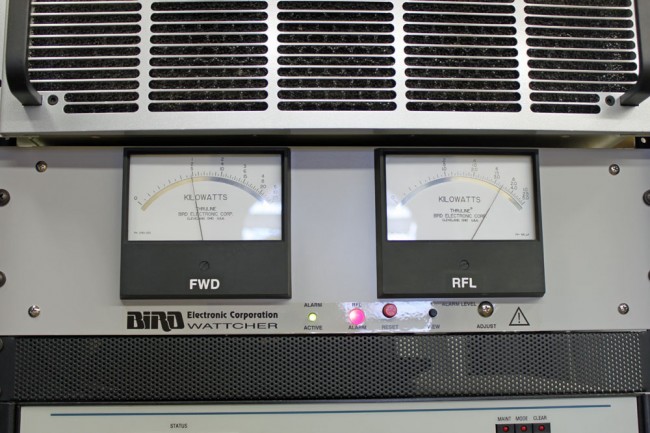
For those of you keeping score at home, that’s 980 watts forward, 375 watts reflected or about 4:1 VSWR. Obviously not a good load, in fact the transmitter shut down. Fortunately, the backup transmitter and antenna system worked flawlessly.
This began happening last month, usually after a heavy rain storm. Thus, I went out to the base of the tower and shook the transmission line and sure enough, water was sloshing around in there. Last time time it happened, a tower crew was summoned to inspect the line. Inspect it they did, but did they find any holes? No, they did not. Perhaps the issue is with the antenna itself, in which case the entire thing will have to be removed from the tower and lowered to the ground. In the mean time, my boss drilled a small “weep hole” at the bottom of the bend where the line comes off the tower.
I uncovered this weep hole and pressurized the line and viola, lots of water came out:
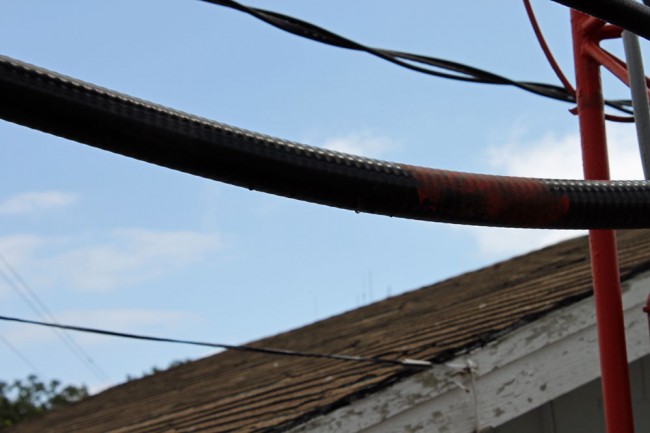
A bit unconventional, but effective nonetheless. The first video is of the water dripping out:
The second video is of me walking back into the transmitter building to pressurize the line:
Everything is very noisy because it is Monday, when all the generators on site exercise. There are five diesel generators running while I was videoing recording this.
I would estimate about 6 ounces of water came out through the weep hole, most of it landing on the ladder underneath. After the water was drained out, the transmitter came back on at full power and normal VSWR.
A temporary fix to get the station back on the air. The real repair work will begin when the antenna comes down to be inspected.
Update: The tower climbers did find a hole in the transmission line, just below the flange that connects to the antenna. It looks like a pencil sized gash just before the line bends back to the tower. Lightning? Rifle bullet? Damage while installing? We can’t really tell. They installed a patch over the hole which holds about 3 psi line pressure. We then used a vacuum pump to evacuate the line, then recharged with dry nitrogen.
Regarding Pedro’s question below in the comments: Since we found this problem quickly and were able to evacuate the line, there should not be any corrosion, that is our hope. Time will tell

